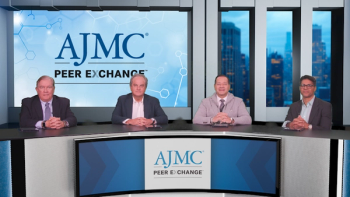
5 Things About Diabetic Eye Disease
Key Takeaways
- Continuous glucose monitoring (CGM) is associated with reduced risk of diabetic retinopathy and proliferative diabetic retinopathy in type 1 diabetes patients.
- Language barriers and limited health literacy contribute to delayed diagnosis and poorer outcomes in diabetic eye disease, particularly in underserved communities.
November is Diabetic Eye Disease Awareness Month. Diabetes is the leading cause of preventable blindness in the US. Here is a look at recent research related to diabetic eye diseases.
The prevalence of eye disease due to diabetes is high in the United States, and diabetic retinopathy is the leading cause of blindness in working-age adults.1 In addition, diabetes it eh leading cause of preventable blindness in the US.2
With November being Diabetic Eye Disease Awareness Month, here is a look at ways to reduce the risk of diabetic eye diseases, the burdens of a prognosis, and the latest ways technology is helping.
1. Continuous Glucose Monitoring (CGM) Could Have a Preventive Role
Patients who use CGM to manage type 1 diabetes had a
2. Equity Issues at Play
Patients with a limited English proficiency were
James M. Coney, MD, FACs, of Retina Associates of Cleveland,
3. Teleretinal Screening Can Be Effective
For DR,
Jose A. Martinez, MD, president and retina specialist at Austin Retina Associates,
4. Treatment Adherence Is Crucial
Even when patients’ disease is stable, they need to be followed closely, Coney
For patients who live an hour from the clinic, adherence to treatment is hard to maintain. After patients receive an injection, they may be dealing with irritation for 12 to 24 hours, which can impact them if they are working. They need to see a doctor every 4 to 6 weeks. These things can be difficult for patients who cannot take time off work so frequently.
“All of our studies show that the most important time in terms of diabetes is the first 6 months to a year. After year 2, year 3, although these individuals still require follow-up, they may not need it as intensively,”
5. The Complicated Link With GLP-1s
Increasingly, patients are taking glucagon-like peptide 1 receptor agonists for diabetes or weight loss. Some research has found higher rates or worsening of retinopathy, but subsequent studies also found many of those patients had pre-existing retinopathy at the time of the study,
Other research has found no worsening of diabetic retinopathy for patients on semaglutide.7 The time-to-first DR worsening was similar between groups of patients taking GLP-1s and sodium-glucose cotransporter-2 receptor agonists.
References
1. Bonavitacola J. Prevalence of eye disease related to diabetes remains high in United States. AJMC®. June 26, 2023. Accessed November 25, 2024.
2. November is Diabetic Eye Disease Awareness Month. UNC School of Medicine Ophthalmology. October 31, 2022. Accessed November 25, 2024.
3. Liu TY, Shpigel J, Khan F, et al. Use of diabetes technologies and retinopathy in adults with type 1 diabetes. JAMA Netw Open. 2024;7(3):e240728. doi:10.1001/jamanetworkopen.2024.0728
4. Shah VN, Kanapka LG, Akturk HK, et al. Time in range is associated with incident diabetic retinopathy in adults with type 1 diabetes: a longitudinal study. Diabetes Technol Ther. 2024;26(4):246-251. doi:10.1089/dia.2023.0486
5. Gill ZS, Marin AI, Caldwell AS, et al. Limited English proficiency is associated with diabetic retinopathy in patients presenting for cataract surgery. Transl Vis Sci Technol. 2023;12(10):4. doi:10.1167/tvst.12.10.4
6. Mehraban Far P, Tai F, Ogunbameru A, et al. Diagnostic accuracy of teleretinal screening for detection of diabetic retinopathy and age-related macular degeneration: a systematic review and meta-analysis. BMJ Open Ophthalmol. Published online February 10, 2022. doi:10.1136/bmjophth-2021-000915
7. Joo JH, Sharma N, Shaia J, et al. The effect of glucagon-like peptide-1 receptor agonists on diabetic retinopathy at a tertiary care center. Ophthalmol Sci. 2024;4(6):100547. doi:10.1016/j.xops.2024.100547
Newsletter
Stay ahead of policy, cost, and value—subscribe to AJMC for expert insights at the intersection of clinical care and health economics.













































